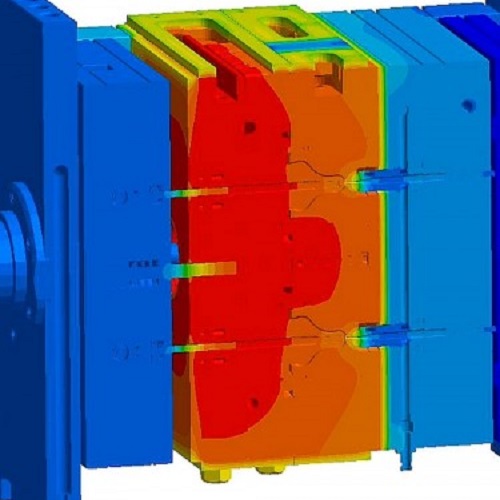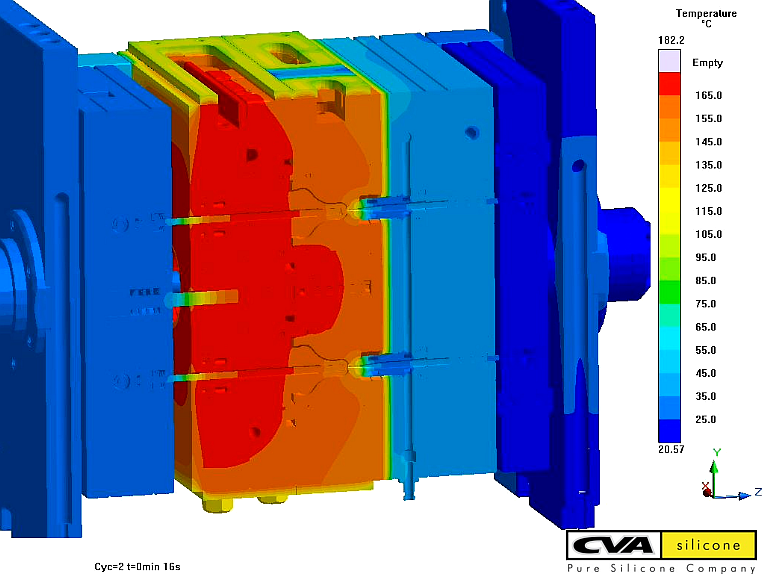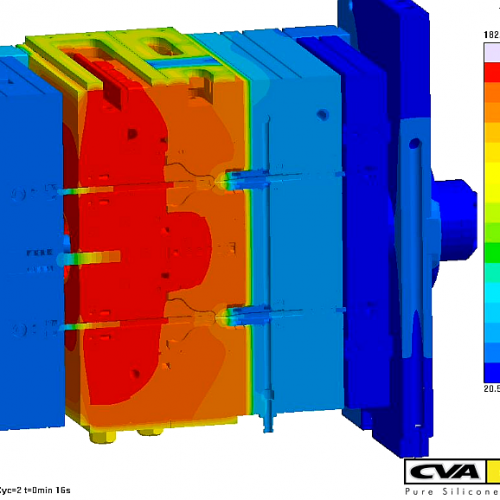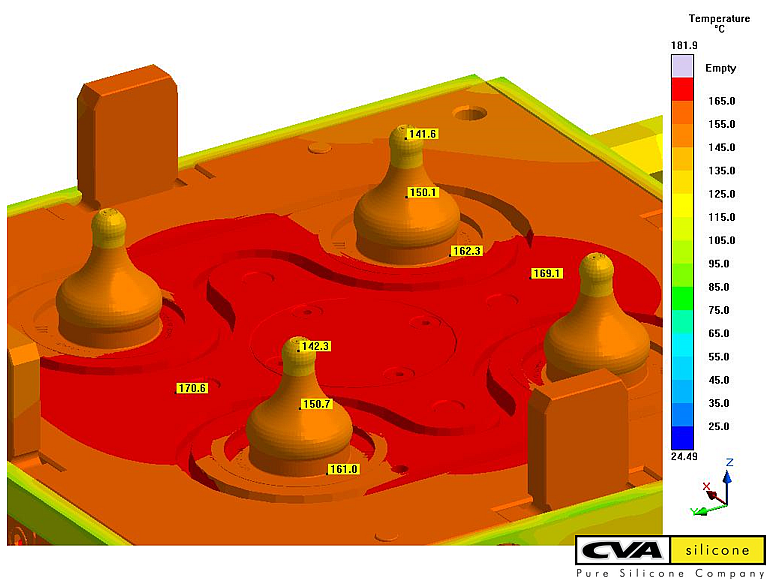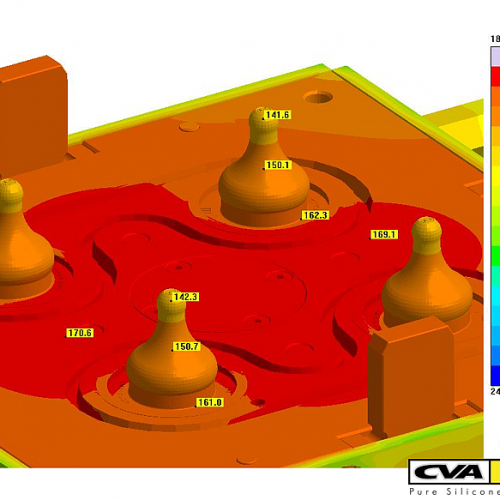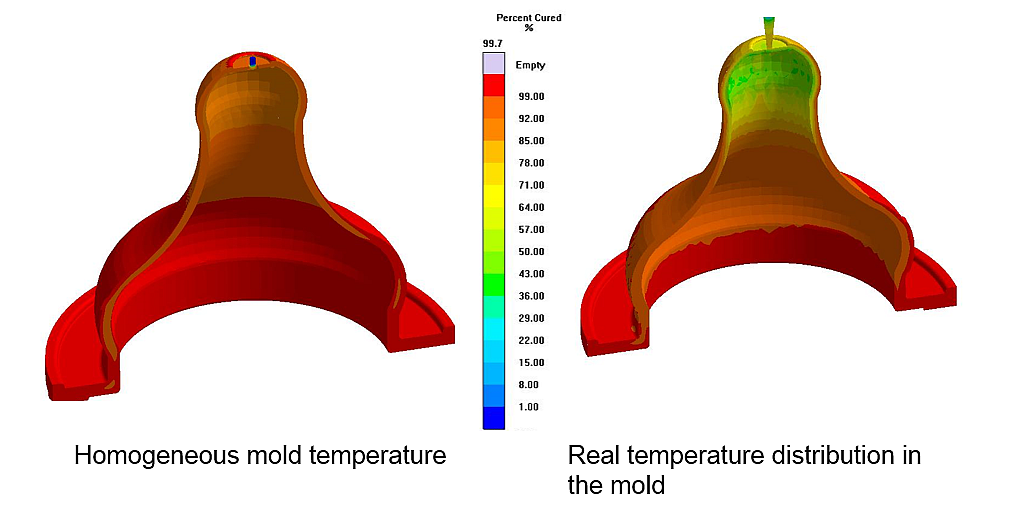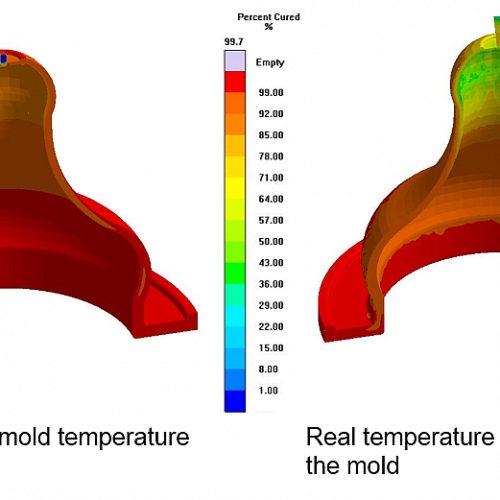LSR Molding: Identifying quality problems before they appear
The demand for liquid silicon rubber (LSR) products is constantly growing. Particularly in the medical and infant care markets, its high thermal stability and very good physiological properties make LSR the material of choice for an increasing number of applications. But the low viscosity of LSR makes the injection molding a constant challenge. In order to maximum profit and minimum scrap it is important to gain an overview of the entire process. This includes the flow and curing behavior as well as the temperature conditions. Problems can thus be detected and eliminated at an early stage.
CVA Silicones, in France, reached out to SIGMA in order to get a better insight on one of its product applications. In this case, they wanted to build a four-cavity mold for a silicon-nipple application. The challenge was to completely analyze the mold performance and predict any quality problems that might occur during production.
The process simulation of the mold starts at room temperature. Heating cartridges and plates preheat the mold to working temperature. Once it is heated, several production cycles are simulated one after the other to bring the mold into a quasi-stationary state (Fig. 1). A detailed analysis of the filling, holding and heating phases is then conducted.
The current tempering layout led to large temperature differences in the moving mold half, as shown in figure 2. While the temperature of the cavity plate was between 165 °C and 170 °C, it variated by 20 °C between the core base and core tip. This large temperature gradient lead to different curing behaviors and thus ultimately to a longer cycle time.
The analysis of the entire mold demonstrates how important it is to consider the “big picture” of thermal performance. For comparison purposes, a "conventional" injection molding simulation was carried out, in which a homogeneous temperature was assumed. The simplified approach with a uniform mold temperature of 160 °C emitted a heating time of 30 s (Fig. 3). The simulation showed that the tip of the component was only 43 % cured after 30 s. A dimensionally stable demolding of the suction cup is not yet possible at this point. In the real cycle a longer heating time is therefore required.
The observation of the real temperature behavior is of particular importance for the component quality and can have costly consequences if not taken into account. In order to analyze the temperature behavior, a great many tests on the actual mold would be necessary to identify defects. Finally, SIGMASOFT® Virtual Molding was used to revise the tempering concept and optimize it with regard to a more even temperature distribution in the mold.
The application of SIGMASOFT® Virtual Molding in LSR injection molding enables the user to identify reasons for quality problems early on, save costs, and reduces scrap. Saving iterations in the development of the actual molds and parts means additional time savings for new projects.
